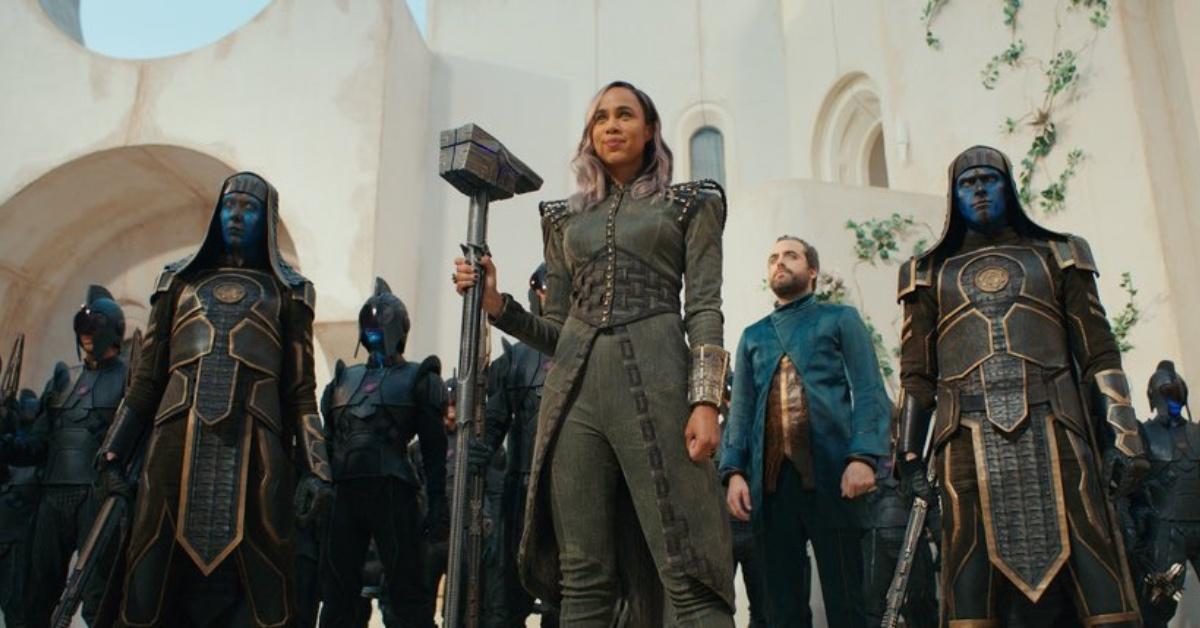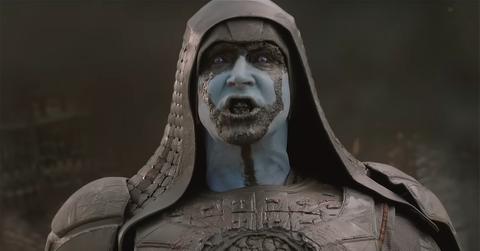Some Kree in the Marvel Universe Are Blue and Some Aren't — Here Are Some Reasons Why
Published Feb. 8 2024, 11:54 a.m. ET
Whether you're keeping up with the comics or are still on the MCU hype train, Marvel fans have been exposed to some deep and intricate lore. For the most part, some of these facets are shared between live-action and comic iterations of the classic characters and their ever-expanding world. This includes that of the Kree. This fictional human-like alien race has long been prevalent in the comics, and they also continue to be expanded on in the MCU after their debut in Guardians of the Galaxy in 2014 (technically Agents of SHIELD before that if we can count it as canon).
But as the Kree continue to make their presence known in the films, fans of the MCU are asking some hard-hitting questions. It makes sense, considering that the Kree have their own biological history comparable to that of Earth's race of humans. Their history as interplanetary conquerors has given rise to their own internal racial divisions and discourse within their fictional setting.
To that end, many are curious as to why some Kree are blue and some aren't. Keep reading for all of the details.

Dar-Benn leads a faction of Kree revolutionaries
The Kree have their own racial divides between blue-skinned and white-skinned Kree.
In the Marvel universe (both in the comics and in film), there exist two factions of the Kree species, ones with blue skin and ones with "pink" or "white" skin. Using the MCU as our pool of examples, there's Ronan the Accuser (Lee Pace) who has blue skin as well as Yon-Rogg (Jude Law) who has white skin. There's even Korath (Djimon Hounsou), a Kree swordsman with black skin.
In other words, there are Kree who have similar varieties in skin color to that of humans.
So, why do they have different skin colors? Well, as far as Kree biology is concerned, blue-skinned Kree are considered to be the species' "purebred." Originally, the Kree race consisted of only blue-skinned people. Due to their status as intergalactic conquerors and interspecies breeding patterns, however, Kree of different skin colors were introduced into the gene pool. This would eventually give rise to people of Kree descent and biology who look more like Earth humans.
Over the course of millennia, blue-skinned Kree actually became the minority to their "human-colored" counterparts. This faction of Kree is actually thought to be more physically durable than the "purebred" Kree. However, the blue Kree maintained dominance over others within their race, creating an internal culture of discrimination against non-blue Kree. In fact, many human-colored Kree are subject to racism and prejudice among their own kind.
In the original comics, non-blue Kree are typically Caucasian in appearance. This portrayal of the Kree may or may not say a lot about older comic creators trying to provide commentary on real-life racial prejudice by framing it within the context of white people experiencing it. If nothing else, the Kree can be said to be a facsimile of diversity within the human race, albeit a binary version of it.
